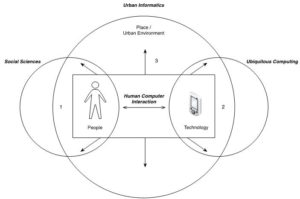
Urban informatics is a trans-disciplinary field of research and practice that draws on three broad domains: People, Place and Technology. Urban informatics uses data (from government, personal or from sensors) to better understand how cities work. This understanding can remedy a wide range of issues affecting the everyday lives of citizens.
For the first time in history, more than half of the people in the world live in urban areas. Now more than ever, cities are supporting rapidly increasing populations while struggling to maintain services, operations and quality of life for their inhabitants.
Currently about 50 percent of the world’s population resides in urban areas and it is growing at over 1 million people per week. If growth patterns continue at this speed, by 2050, 64 percent of people in the developing world, and 85 percent of people in the developed world, will be living in urban area. As cities grow, the task of understanding how they work is becoming a pressing global issue.
Two phenomena make urban informatics possible and necessary for our times: global urbanization and the digital revolution. With urban informatics, large-scale datasets and analytics can be used to address fundamental problems and challenges of city operations, planning, and development, problems that left unchecked will only grow as cities grow. Urban informatics can turn data into solutions for city’s toughest problems. The proliferation of spatial analysis, data mining, modeling, and visualization in virtually all parts of policy analysis and decision making calls for a new generation of experts who can navigate the technical and socioeconomic landscape on which life in the city unfolds.
Very few universities in the world currently offer degrees in Urban Informatics, a pioneering field in its early stages.